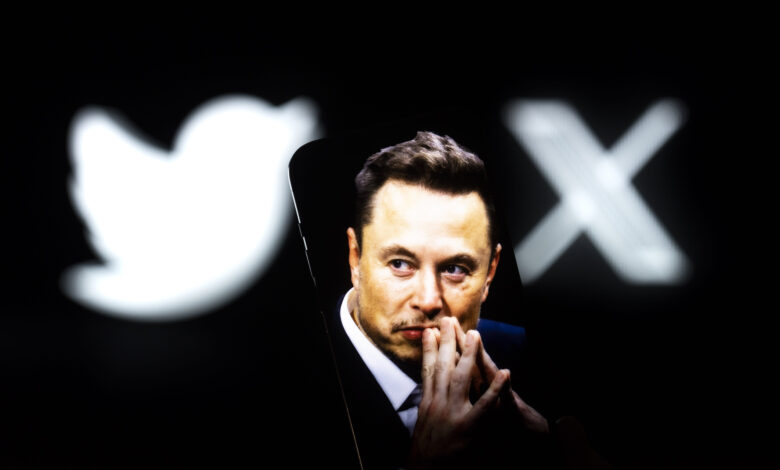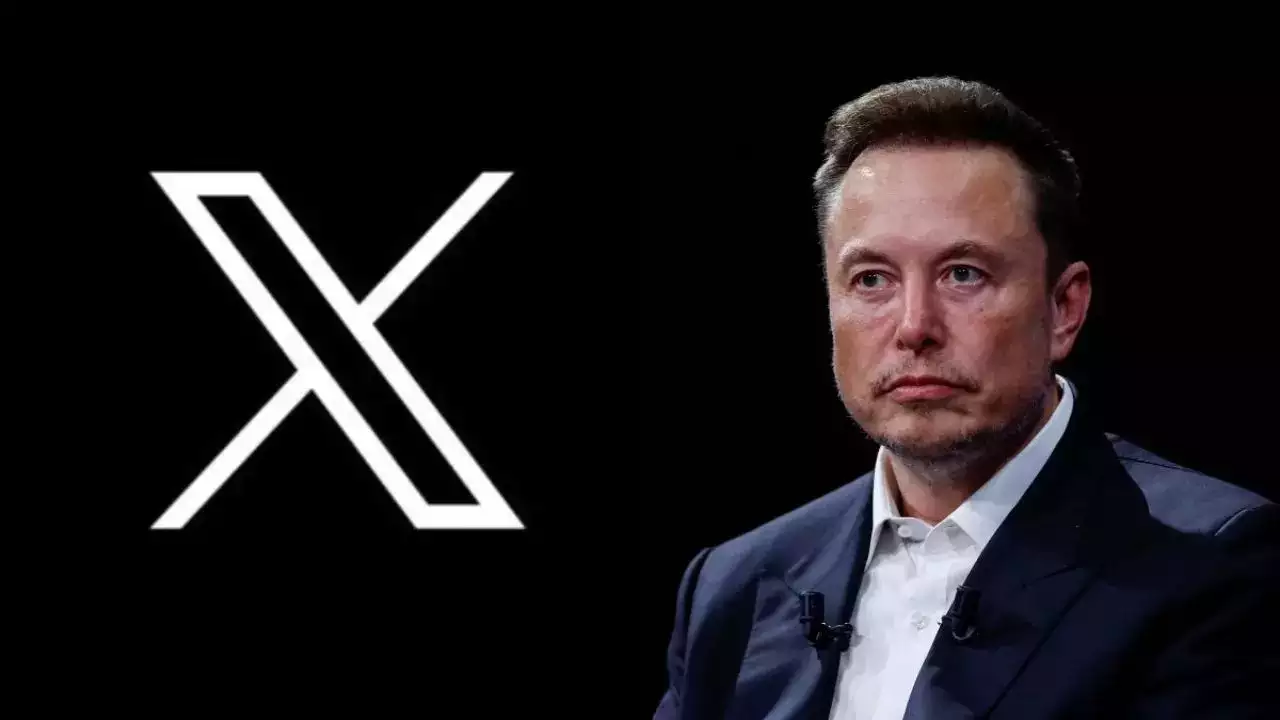A 90% Revenue Decline And 90% Layoffs. Elon Musk-Owned X India’s Revenue And Profit Decline By 90% In FY24. What Went Wrong With X India?
X India, the Indian arm of Elon Musk-owned X, which was formerly Twitter, has seen a drastic decline in revenue and profit in FY24. The figures have reportedly dropped by around 90%. This is a big shift from the previous fiscal year, where the company had shown growth. The financial statements that X India filed with the Ministry of Corporate Affairs reflect an alarming deterioration in the group's revenues from ₹207.7 crore to an abysmal ₹21.1 crore between FY23 and FY24 and a complete nosedive in the net profit between ₹30.4 crore to ₹3.1 crore during the same period.

Twitter, rebranded as “X,” is already over ten years old in global social media. Twitter had been a very exclusive platform for many Indians where one could connect, update themself, and engage with others on issues related to life. The 2022 scenario is completely different. The Elon Musk deal sent ripples in the form of changes at each nook and corner of the company, including Indian operations. In FY24, X India experienced a significant drop of 90% in revenue and profit. It is quite far from the previous growth it experienced.
Twitter India Before Elon Musk: The Growing Platform
Twitter in India has been quite stable, but more so when placed in context with its position as the medium of discussion on issues of politics and society: it remains enormously popular with the potential to engage directly with a massive readership, especially useful within India as a country with a user base of 24 million; it is particularly strong within urbanized areas. The platform doesn’t just go through people’s updates-there are debates, activists, and keeping people connected to each other and to other things.
Financial Health at the Time of Acquisition
Twitter India is said to be healthy and in good financial health. The company, which goes by the name Twitter Communications India Pvt Ltd, had managed to rake in a gross annual revenue of ₹207.7 crore for the previous fiscal. It also reported net profit for FY23 of ₹30.4 crore. Major brands and businesses were ready to pay whatever was necessary to reach this audience segment on the Twitter site compared to other media channels such as newspapers and magazines. This is an auspicious figure and proves the case that Twitter India would successfully meet its bottom-line expectations.
Key Strategies and Focus Areas
Primarily driven through ads on Twitter India before the Musk acquisition. For brands, it has been a highly lucrative destination where they can reach young, tech-savvy consumers. From e-commerce to entertainment, organizations employ the advertisement feature on Twitter to reach targeted customers for their products or services.
Before Musk, Twitter India had around 250 employees. Most of that team was really important in handling relationships with Indian advertisers and helping users, but most importantly creating a user experience suited to Indian audiences. The local team, including one of the leads on local market insights, was instrumental in helping come up with advertising strategies that related locally.
Content moderation was the core element through which Twitter attracted advertisers. India-focused investment in moderation made the Twitter platform feel safe for its users and advertisers. As a result, advertisers found it comfortable knowing that their brands would not be seen with inappropriate or harmful content.
It was very active in reaching local influencers, politicians, and organizations, giving the feeling of inclusivity in which Twitter would grow a loyal set of users who saw it as the platform for discussions that mattered.
The aforementioned strategies made Twitter one of the most relevant platforms in India. Therefore, with an adequate number of locals in the teams and with considerable advertising support, Twitter India kept moving steadily. It was just when Musk came into play that brought out a whole new vision contrary to the ones mentioned previously.
Elon Musk Takes Over Twitter: A New Era with Big Changes

In October 2022, Elon Musk agreed to a deal worth $44 billion to purchase Twitter while bringing with it great ideas to reshape the platform. Musk described the company as underperforming based on the nature of bureaucratic, inefficient, and non-essential costs. Therefore, he wanted to trim down the company and, by all means, increase the financial sustenance of the company. However, his action was anything but traditional.
The first thing that Musk did was reduce the workforce. This was cutting down on the expense. Musk reportedly let go around 70% of his staff across the globe through operations on Twitter. The severance in India was actually more drastic. The laid-off percentage reached nearly 90% for the employee base in Twitter India: from around 250, it dropped to 12 people. The change must have been shocking for most of them since they immediately had to bear an extraordinary range of responsibilities, and high stress and uncertainty were involved.
Musk also reformed the leadership at Twitter. He fired the chief executive of the platform, Parag Agrawal, along with a number of senior managers. In India, he reduced the board to two members: Anup Ashok Malashetti and Winston Sei Seng Foo. The smaller team of leaders represented Musk’s philosophy on lean structures, but it denied X India leadership from locals who knew their way around the Indian market.
A Push towards Monetization through Paid Services
The third was paid features. During the time of Musk, the company introduced “Twitter Blue,” which allows subscribers to pay for a verified badge and many more perks. Initially, verification was reserved to notable figures, but Musk opened verification for anyone willing to pay because he hoped this would set up a steady revenue source.This was a sharp deviation from what Twitter had earlier focused upon, that is, large partnerships with big advertisers.
Smoothening over standardization of operations throughout the markets. The whole plan meant that Twitter India received little attention at any point. The very idea of Musk overlooked local aspects of the Indian market and focused on other aspects to boost the performance of the network. It degraded India, which is an important operation area for Twitter.
One significant change was by Musk, where the content moderation policy was relaxed. Open speech meant everything to him. Hence, content restrictions were brought to a minimum in the platform, thus worrying the advertisers about showing their ads besides objectionable content. Brand safety, which used to be strictly observed in Twitter India, also became secondary; it means financially directly impacted.
The Indian Express reported the “Indian business news that explained” why X, a digital platform of worldwide scale, lost 90 percent in revenue and loss last year.
The following changes had significant implications for the company. The financial reports for the fiscal year 2024 (FY24) show that both the revenue and profit of X India decreased by 90%. Revenue went down from ₹207.7 crore in FY23 to ₹21.1 crore in FY24, and the profit went down from ₹30.4 crore to only ₹3.1 crore. The following are the primary reasons for this massive decline:
As soon as Musk relaxed the rules on content moderation, most of the advertisers started to feel uneasy about advertising their brands on Twitter. For an advertiser, brand safety is one of the critical things. The ads were afraid to be associated with improper or controversial content. Brands made the decision to either decrease their advertisement budgets or stop advertising completely from the platform. The loss of advertiser confidence was immediately impacting the revenue of X India because advertising was a main source of income.
The 90% reduction in staff led to great challenges in terms of operations. With 12 employees, X India could not execute its relationship with the advertisers, handle customer services, or stabilize the platform. Having a full team would have allowed X India to participate more meaningfully in local operations with clients and support users and take care of daily operations efficiently. Undoubtedly, the operational burden contributed to the fall in revenues.
India was one of the key focus markets for Twitter, with hundreds of millions of users. However, during Musk’s tenure, India was no longer a high-profile market. The local team was scaled down, and the approach towards India-based strategies also changed, where interaction with Indian advertising clients was reduced. This led to a reduction of the company’s local marketing and partnership income.
From this point, other social media companies started entering India. YouTube and Instagram tried for more youth-oriented markets; they attracted viewers who would look for images and content with influencer engagement. WhatsApp was still incredibly strong on messaging, really driving home the point that only a little value was being extracted from Twitter as they became accustomed to their new alternative.
As Indians transitioned to these other platforms, the X India users started trending less, so the attraction to advertisers began to suffer. The changing circumstances also took a psychological toll on the few employees remaining with X India. The working environment became unlivable for the ones who remained.
The team was now much smaller than it was, and the remaining employees had to bear a humongous workload. They had to manage everything from advertising accounts to technical support without enough resources. This resulted in extremely high levels of stress and burnout. Employees were left in a very vague state of affairs about the future prospects of the platform in India or even their jobs themselves.
Leadership transition issues were also accompanied by communication issues. Soon after Musk’s takeover, it was reported that weak internal communication had adversely affected the employees. The company objectives regarding the layoff, change in the strategy, and company aims were not disclosed. These reasons did not allow the workers to do their job properly and motivate themselves towards the work.
As X India’s reputation went through changes, it was found that attracting new talent was difficult because the hiring potential was not ready to join a company that had the impression of downsizing and losing public confidence. A perception created about X regarding being unpredictable and demanding while at work made it difficult as well to find people to join the company.
Future of X India

In summary, the future of X India is quite uncertain as revenue and profit are currently at an all-time low. The platform faces great challenges in its quest to rebuild itself as a competitive player in the social media race in India.
If the company is to regain that lost revenue, it would have to refocus efforts on winning back the confidence of advertisers. This will involve revisiting content moderation practices to ensure that safety for brands exists on this platform.
It may regain its relevance if it shifts focus to India-specific strategies. Maybe again, hire a team of local experts who understand the Indian user and can come up with tailored marketing campaigns. Of course, paid verification has yet to deliver the results expected. There are other monetization models that will better fit the needs of Indian users, such as content partnerships or in-app features.
X India will have to rebuild its internal team and provide stability if it is to attract new talent. It will have to correct past mistakes in communication and workload distribution to create a positive work culture.
A New Chapter for X India?
The vision of a streamlined and monetized social media platform is coming at a cost as high as Rs 6 trillion in India. The high revenue and profit drop that has been seen for FY24 reflects the riskiness of change in a highly complex and competitive market.
It’s a very harsh lesson that any drastic change in leadership and strategy can cause, which was the case with the shareholder as X India’s story went down in terms of revenue and profit. Bringing in the new vision of Elon Musk was a takeover, but the way of implementing it has been destructive in its consequences. For such a market like India, with high diversity and competitiveness, cost-cutting and centralized decision-making needed to be cheaper to attract.
X India’s 90% revenue loss explains the challenges of how global platforms can remain meaningful at the local level. Through X India’s process of change, the corporation’s story teaches one important aspect of innovation versus stability when operating in other parts of the world. For its users, advertisers, and a few remaining employees, one might wish that X India is going to find a way to stay relevant in Indian social media. It, as such, still has lot on its plate to complete before the platform can successfully establish itself.




